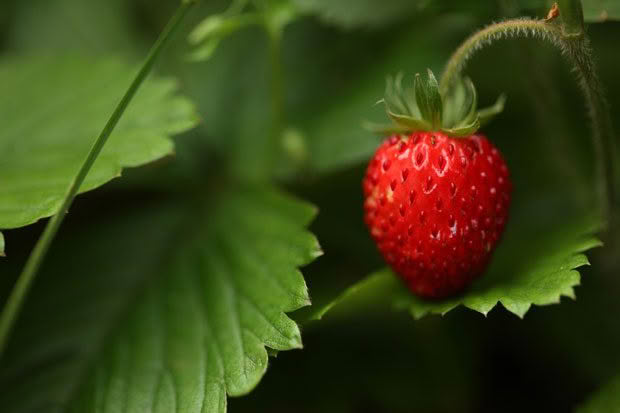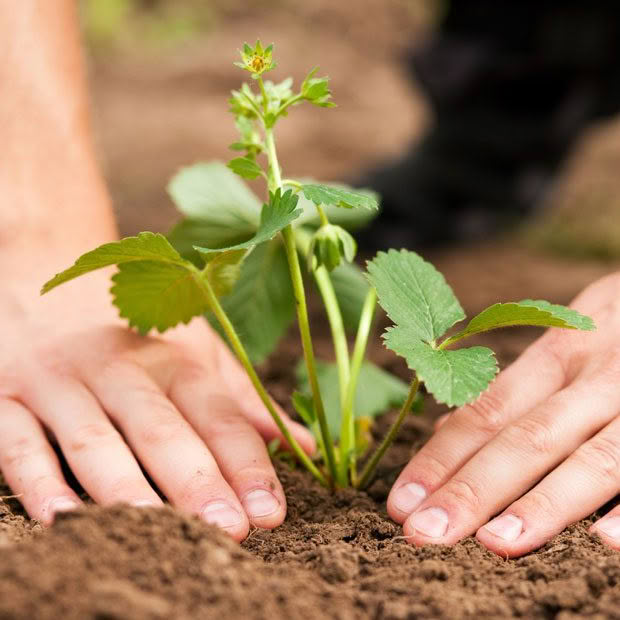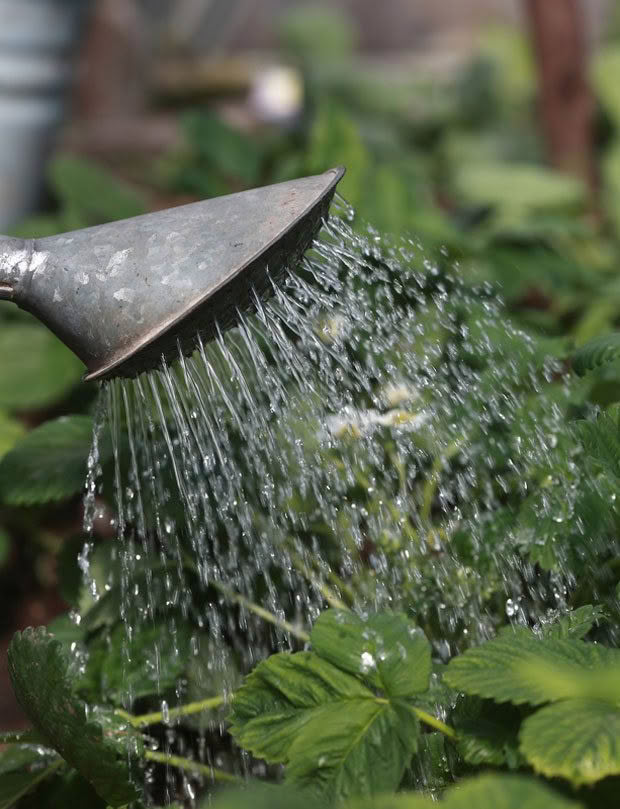Why you should start planning in autumn for next summer’s strawberry crop

The sweet juicy strawberries of summer might be a faint memory now but you need to start planning now for next year’s bounty.
To get great-tasting strawberries takes some time and preparation but the results will definitely be worth it and humans have been enjoying these wonderful little fruits for thousands of years. They even get a mention in the history of the Roman empire but they didn’t take off as a cropping plant until the 1800s when gardeners finally developed hardy hybrids that were self-fertile.
The strawberry plant is a gross feeder and loves a well composted and manured soil, so if you have an area of garden in mind, a little preparation during April will leave you well prepared for planting in May.

The ideal site will get good sunlight for 8-10 hours a day, be well-drained soil with a pH of between 6.0-6.2. Avoid areas where previous strawberry patches, raspberries or vegetables such as tomatoes, potatoes and peppers have been grown.
If this isn’t your garden, the traditional way of growing strawberries is by using mounds. You want to create a mound of compost and organic matter to help retain moisture but to be well draining.
If possible, plant rows north to south to allow for even ripening in rows about 40cm apart and 40cm wide and water well.
Once you’ve planted, mulch around the plants to prevent weed growth, keep up moisture levels and keep fruit clean. You can use black polythene to do this job but straw looks nicer.
Not enough room in your vege patch? Then try planting your strawberries in containers – so long as they get a good supply of food and water, you can have strawberry plants tumbling out of any old container that has good drainage. A good liquid feed for strawberries is one used for tomato plants.
WATERING
Keep up the watering, in autumn if it’s dry and especially when the fruit is forming and you should be rewarded with slightly earlier fruit than is usual – plants should be getting about 2-3cm of water a week in one good drink.
A drip line is an excellent way to make sure plants get the water they require during a hot summer. Keep it up while fruit are forming but reduce it as they being to ripen so berries are firm and full of flavour or you will encourage botrytis and soft, flavourless fruit.

The plants in a carefully tended strawberry patch will last you 2-3 years, although the first year will always have the bumper crop. Because strawberries use up so much energy, you may see signs of deficiencies occurring, especially at cropping time. Hills Labs report the most likely deficiencies to occur are nitrogen, phosophorus, potassium and magnesium.
Nitrogen – shows up as a bleaching of older leaf blades and develops into shortened red and brittle petioles. Early signs are the leave fading from dark green to light green.
Phosphorus – shows up as a dark green leaf with a black, metallic sheen on the upper surface.
Potassium – serrated tips of old leaves will turn red and the colour will then spread inwards.
Magnesium – leaves will begin to bleach out and look stunted, then wither and die.
Hills advise strawberries are known to be sensitive to chloride, a potassium Sulphate fertiliser should be used in preference to one containing potassium chloride.
CARE FOR YOUR PLANTS
Because strawberries tend to strip nutrients from the soil quite quickly, you will need to use a fertiliser than replaces the lost trace elements – a good seaweed-based spray is an excellent option or a general garden fertiliser. Water regularly!
The experts at Koanga Gardens recommend deflowering plants until they look strong and healthy and to encourage extra runners.
THE HARVEST
The best time of the year, with fruit going ripe anywhere from 20-35 days after flowering. As fruit forms, cover it with netting for protection from birds.
Pick every couple of days or more often in hot weather and remove old leaves and stems once a plant has finished its crop.
Once your berries are safely inside, keep the green caps on until you are ready to eat. To keep them fresh and tasting great for as long as possible, keep in the fridge on a shallow tray lined with paper towels. Don’t wash berries until you are ready to eat them.
Some varieties will even crop twice for you – if you choose a two-crop variety, make sure plants are given a good trimming after the first crop, and feed and water well – in fact Sarah Frater of the Edible Garden recommends cutting off all the leaves to get a good second crop out of strawberries like Tioga.
PESTS
Aphids – check the underside of the leaves
Boyrytis – grey mould that causes fruit to rot, will cover fruit with grey-brown spots
Leaf spot – light brown spots will appear. To prevent, use a copper spray at regular Mites – look on the underside of leaves for speckling or silvering of the leaves
Rust – small orange spots on underside of leaves.
Slugs + Snails – mulch with straw and use containers of beer or pellets (don’t allow cats and dogs access to these pellets).
intervals.
Virus damage – yellow leaves on a stunted or very slow-growing plant indicates a virus. Remove the plant immediately and destroy.

